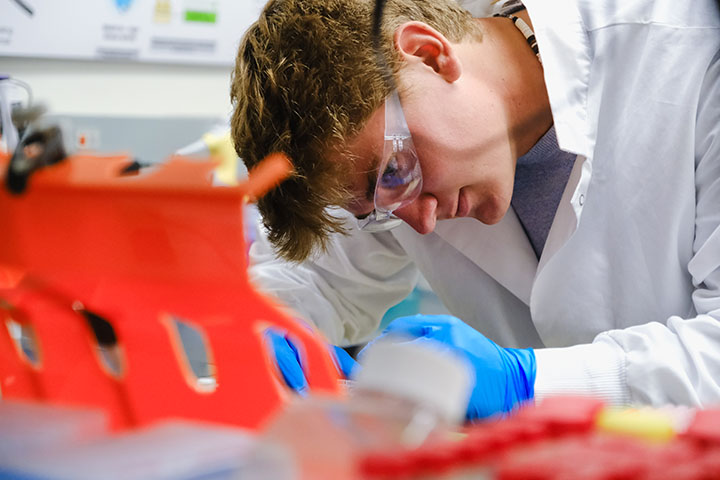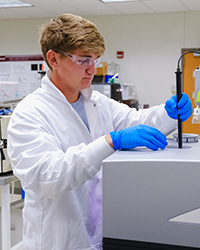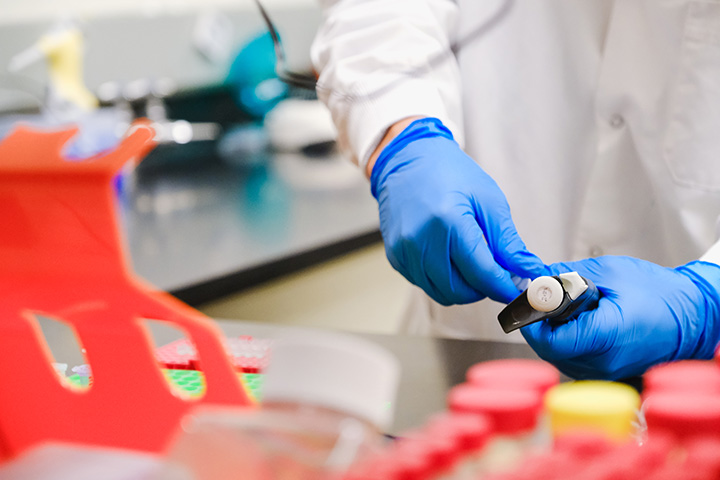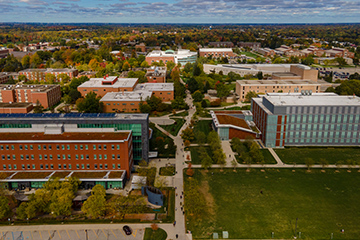Student seeks a workaround for diabetes management
Protein offers alternative to invasive blood tests, injections

Highlights:
- Central Michigan University student works to develop new protein to remove insulin from the bloodstream.
- Protein could emit a light to signal elevated blood sugar levels.
- Research by the student helped CMU secure a $75,000 foundation grant to continue his work.
A unique research opportunity rounded out Brevin St. Onge’s undergraduate education at Central Michigan University, and the fruits of it could eventually help patients with diabetes manage glucose levels without insulin injections.
St. Onge, from Mount Pleasant, spent the last year developing a prototype of a tiny protein that can detect high levels of glucose in the bloodstream. It could help people with Type 1 diabetes manage the disease without frequent blood tests and insulin injections.
Diabetes occurs when the body can’t produce enough insulin to remove excess glucose, a simple sugar that is a primary source of energy, from the blood. Prolonged elevated glucose levels can lead to loss of vision, kidney damage and nerve cell loss that can lead to conditions like Alzheimer’s.

Type 1 diabetes is caused when the body’s immune system attacks the pancreas, where insulin is made. It is a chronic health condition today controlled through constant monitoring and insulin injections.
It’s an imperfect way to manage the disease.
The prototype protein St. Onge researched could give diabetics a less invasive, more accurate workaround, said Eric Petersen, a faculty member in the Neurosciences program. Petersen mentored St. Onge throughout the year he worked on the project.
The proteins would detect elevated levels of glucose and bind to it, removing it from the bloodstream, St. Onge said. Then, the proteins would emit a light, a signal to anyone watching that someone’s blood glucose levels are elevated.
St. Onge started work on the proteins last summer through a student summer scholar grant from CMU’s Office of Research and Graduate Studies. The neuroscience program kicked in some additional money for supplies, Petersen said.
This summer, St. Onge ramped up the intensity of his research as a directed research project, a unique opportunity for neuroscience students to earn credits by conducting research, Petersen said.
Working directly with Petersen was an invaluable experience, St. Onge said. There were times that he ran into difficult problems, but Petersen talked him through them and helped him find creative solutions.
Like students whose mentorship helped him succeed at CMU, St. Onge’s progress on the project will support other students to continue his work.
Data he gathered last year was used to support a grant application that secured $75,000 in funding from the Diabetes Research Connection.
The money helped St. Onge continue working on his project, and it will help keep it going.
Another student has already stepped forward to continue St. Onge’s research, he said. He’s said he’s leaving CMU, feeling good that the work he poured himself into for more than a year will continue.





